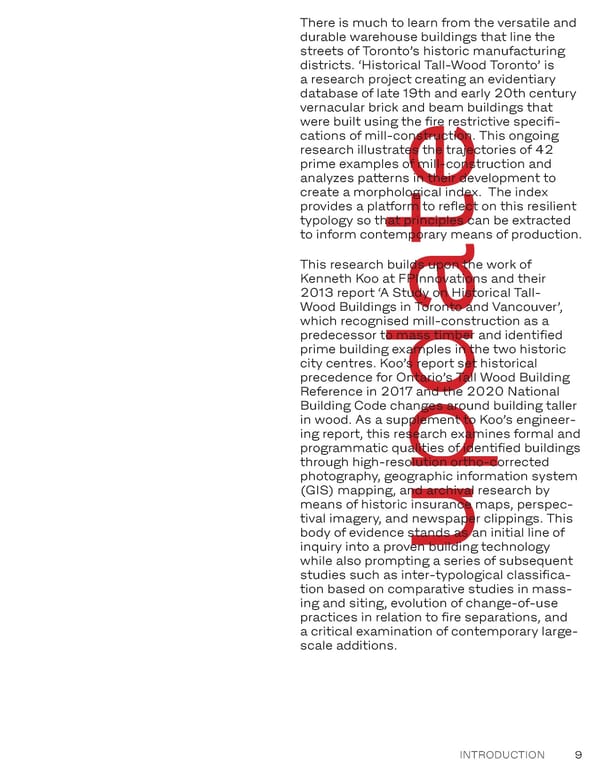There is much to learn from the versatile and durable warehouse buildings that line the streets of Toronto’s historic manufacturing districts. ‘Historical Tall-Wood Toronto’ is a research project creating an evidentiary database of late 19th and early 20th century vernacular brick and beam buildings that were built using the 昀椀re restrictive speci昀椀- cations of mill-construction. This ongoing research illustrates the trajectories of 42 prime examples of mill-construction and analyzes patterns in their development to create a morphological index. The index provides a platform to re昀氀ect on this resilient typology so that principles can be extracted to inform contemporary means of production. This research builds upon the work of Kenneth Koo at FPInnovations and their 2013 report ‘A Study on Historical Tall- Wood Buildings in Toronto and Vancouver’, which recognised mill-construction as a predecessor to mass timber and identi昀椀ed prime building examples in the two historic city centres. Koo’s report set historical precedence for Ontario’s Tall Wood Building Reference in 2017 and the 2020 National Building Code changes around building taller in wood. As a supplement to Koo’s engineer- ing report, this research examines formal and programmatic qualities of identi昀椀ed buildings through high-resolution ortho-corrected photography, geographic information system (GIS) mapping, and archival research by means of historic insurance maps, perspec- tival imagery, and newspaper clippings. This body of evidence stands as an initial line of inquiry into a proven building technology update while also prompting a series of subsequent studies such as inter-typological classi昀椀ca- tion based on comparative studies in mass- ing and siting, evolution of change-of-use practices in relation to 昀椀re separations, and a critical examination of contemporary large- scale additions. INTRODUCTION 9
 Historical Tall Wood Toronto - Draft Excerpts Page 8 Page 10
Historical Tall Wood Toronto - Draft Excerpts Page 8 Page 10